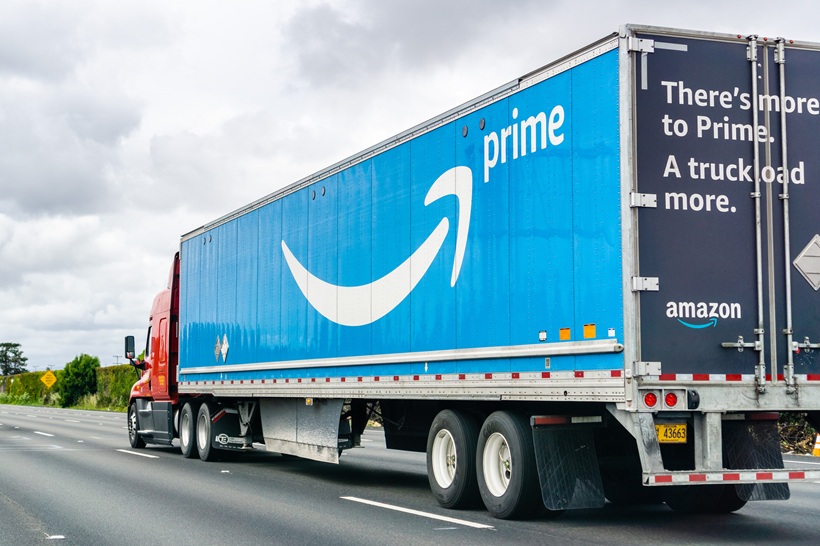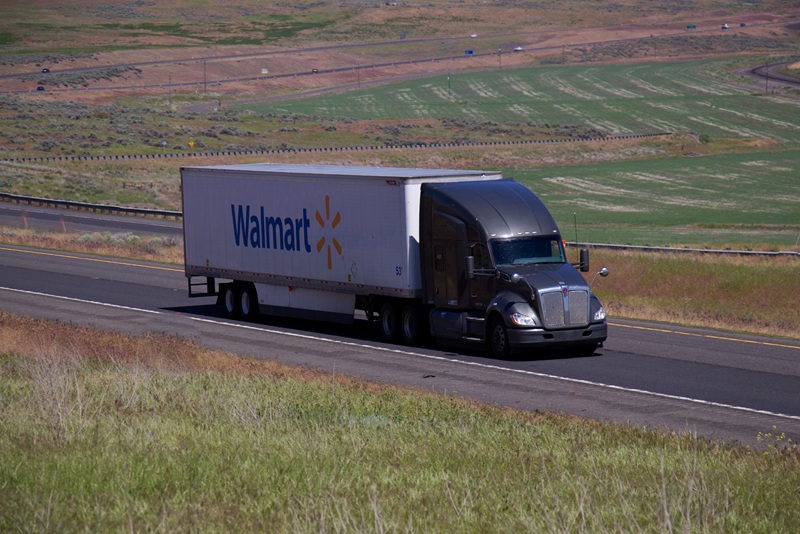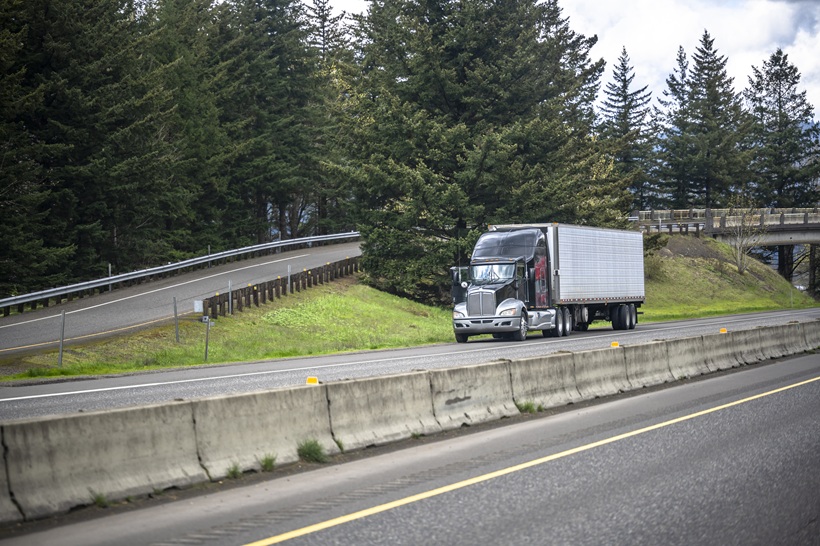
How Amazon and Walmart Could Reshape Freight Networks
The largest companies in the U.S. aren’t known to be trucking carriers or freight brokers. After all, trucking is a decentralized sector, with an estimated 96% of fleets operating 10 or fewer trucks and 99.7% managing 100 or fewer trucks. For every massive name in the trucking world on top 100 lists, there are hundreds of smaller carriers and brokers who make up the majority of companies in the industry.
While some of the largest companies in the U.S. have private fleets or provide delivery services over the road, there aren’t a lot of companies whose primary mission is over-the-road logistics on the list of the country’s biggest companies by market capitalization.
However, two giants of American commerce—Amazon and Walmart—have each made recent moves into the freight space, with Amazon making a play in the less-than-truckload (LTL) space and Walmart becoming a freight broker.
Let’s take a succinct look at each company’s recent moves and answer some pressing questions about what Amazon and Walmart could mean for the industry going forward.
Amazon increases its LTL presence
In April, Amazon sent a memo to customers announcing that it would begin offering an LTL service through Amazon Freight in the U.S. The offering is different from a traditional hub-and-spoke LTL model, as it will only be available for inbound delivery to Amazon facilities. It’s not available outside of the Amazon network, and shippers can’t ship directly to customers with the new service.
However, this service could be a precursor to a much more comprehensive LTL offering in the future. In February, Amazon announced it was developing a new LTL team with the aim of establishing a “disruptive transportation product.” This ramp up in LTL staffing follows Amazon launching an LTL program in Germany last year.
Walmart begins brokering
Walmart—the nation’s largest retailer—sent out an email to trucking companies in its transportation network announcing that it would begin onboarding carriers for a brokerage program with “access to thousands of loads.” While Walmart has worked with carriers outside of its private fleet in the past, this move positions the Arkansas-based giant as a possible competitor in the 3PL space.
To haul for Walmart and gain access to its load board, carriers must:
- Own 11-999 units
- Operate for 5 years or more consecutively
- Have $1,000,000 in liability insurance and $100,000 in cargo insurance
- Have 53-foot dry vans, reefers, or flatbeds
- Meet Walmart’s safety requirements
- Equip drivers with smart devices for tracking
How might Walmart’s entry into the freight brokerage space disrupt traditional brokerage models?

Walmart’s massive freight volumes create a significant competitive advantage, enabling the retail giant to potentially undercut traditional brokers on fees while offering logistics solutions. Smaller independent brokers relying on legacy systems face mounting pressure to modernize or automate their operations or risk carrier migration to massive names like Walmart, who can offer a seamless, data-rich platform that promises both cost savings and operational simplicity.
What are the implications for carriers if other major retailers follow Walmart’s lead and launch their own freight brokerage arms?
A proliferation of retailer-operated brokerages could reshape the freight landscape, creating both opportunities and challenges for carriers. The market would likely become increasingly fragmented as major retailers establish proprietary platforms—each with distinct compliance requirements, tracking protocols, and booking systems.
Simultaneously, heightened competition among brokerages who haul retail shipments could drive down pressure on fees industry-wide, as each platform competes for carrier capacity through pricing incentives and service guarantees. Should this new Walmart model expand, forward-thinking carriers will need to strategically evaluate which retailer relationships offer the most sustainable value.
If Amazon expands its LTL service beyond inbound shipments to its own facilities, what would be the potential impact on the broader LTL market?
An expanded Amazon LTL offering may present a seismic disruption to the established market. Unlike its current inbound-only model for Amazon fulfillment centers, a comprehensive Amazon LTL network could rapidly capture substantial retail shipping volume from traditional carriers.
While industry analysts at J.P. Morgan question Amazon’s ability to become a standalone carrier due to infrastructure challenges (evidenced by their avoiding Yellow Corp’s bankruptcy-auctioned properties), Amazon’s expansion history suggests a measured but determined expansion approach.
If Walmart and Amazon continue expanding their logistics operations, how might this shift the dynamics in carrier-broker relationships?
The accelerating logistics expansion of both retail giants could represent a fundamental power shift in traditional carrier-broker dynamics. As Walmart and Amazon develop proprietary platforms with standardized terms and steady freight volume, carriers—particularly those focused on retailer-driven lanes—may increasingly engage directly with these systems, bypassing traditional intermediaries.
The role of retailer-as-broker concentrates negotiating power on the shipper side while simultaneously raising technology and performance expectations across the industry. For carriers, this transformation presents a potential inflection point: embrace integration with retail logistics ecosystems for volume stability and potential growth or differentiate through specialized services beyond the reach of standardized retail freight networks.
Will your company be ready for a changing freight landscape?
The respective expansions of Walmart and Amazon into freight brokerage and LTL services signal potential market shifts—and not every carrier or broker will be ready. As retail giants consolidate freight control and set new technology and pricing standards, smaller players risk being squeezed out or sidelined.
However, there will also be opportunities to take advantage of the massive volumes that Walmart and Amazon haul. With freight market disruptions like tariffs and low margins likely to continue throughout 2025, carriers and brokers should pay close attention to how these two behemoths of American commerce respond and innovate.
TL;DR
Amazon and Walmart are making major moves into freight that could reshape LTL sector dynamics—Amazon launched LTL services for inbound shipments to its facilities (with plans for a “disruptive transportation product”) while Walmart began operating as a freight broker offering “thousands of loads” to carriers meeting specific requirements (11-999 units, 5+ years experience, insurance minimums). Potential disruptions include Walmart’s massive freight volumes possibly undercutting traditional brokers on fees, forcing smaller brokers to modernize or lose carriers. Additionally, if Amazon expands LTL beyond inbound shipments, it could capture substantial retail shipping volume from traditional carriers; retailer-operated brokerages could fragment the market with distinct compliance requirements while driving down industry-wide fees. The power shift concentrates negotiating power on the shipper side, potentially allowing carriers to bypass traditional intermediaries for direct relationships with retail giants, but also raises technology and performance expectations.



